SCREEN MIRAI Laboratory
SCREEN MIRAI Laboratory is a research hub established in July 2024 by the University of Osaka and SCREEN Holdings on the Suita Campus of the University of Osaka. This laboratory focuses on advancing research and development in various fields, including the miniaturization and complexity of semiconductor manufacturing technologies and life sciences.The laboratory aims to deepen the joint research that has been conducted so far and promote long-term collaboration by combining simulation and experimental methods to develop advanced processes. By linking the university’s research with SCREEN Holdings’ business strategies, the lab seeks to create new technologies and implement them in society.Additionally, the lab is committed to nurturing young researchers with high expertise, thereby strengthening collaboration between industry and academia. Since its establishment on July 1, 2024, the laboratory has made significant progress towards these goals, with concrete results already emerging. This progress is expected to lead to sustainable technological innovation and contributions to society.
Panasonic Science Research Alliance Laboratories
Under the bland slogan of Panasonic Group, “Live Your Best”, our department provides a setting that combines with the potentials of Panasonic and Osaka University, including its research information, technologies, personnel, and facilities, and thereby makes a place for innovation that creates social changing new values. Furthermore, by combining research in a diverse range of fields, including engineering, science, medicine, economics, and psychology, through exchanges and collaboration, our department creates synergistic effects to enable top-level research and personnel development for both parties.
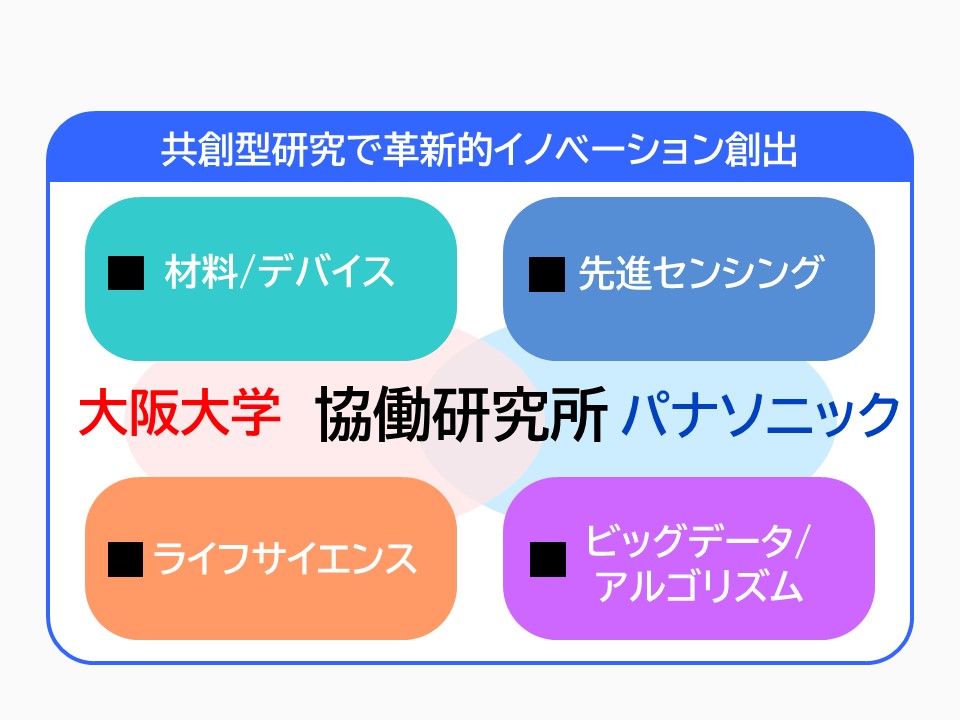
Kanadevia Square Reserach Alliance Laboratory functions as a strategic hub for comprehensive industry-academia partnerships between Osaka University and Kanadevia. In pursuit of enhancing and evolving Kanadevia’s foundational technologies, the institute undertakes joint research initiatives with affiliated laboratories in the Graduate School of Engineering, the International Center for Biotechnology, and the Joining and Welding Research Institute, with a focus on life sciences and welding technology.

As a base for joint research between Osaka University and Komatsu, we are engaged in improving the productivity of construction & production sites, to realizes automation, remoteness, and efficiency. In addition to utilizing ICT, we will collaborate with various laboratories in a wide range of fields such as control, image processing, sensors, simulation, and other data analysis by utilizing the viewpoints and ideas unique to universities, aiming for speedy establishment.
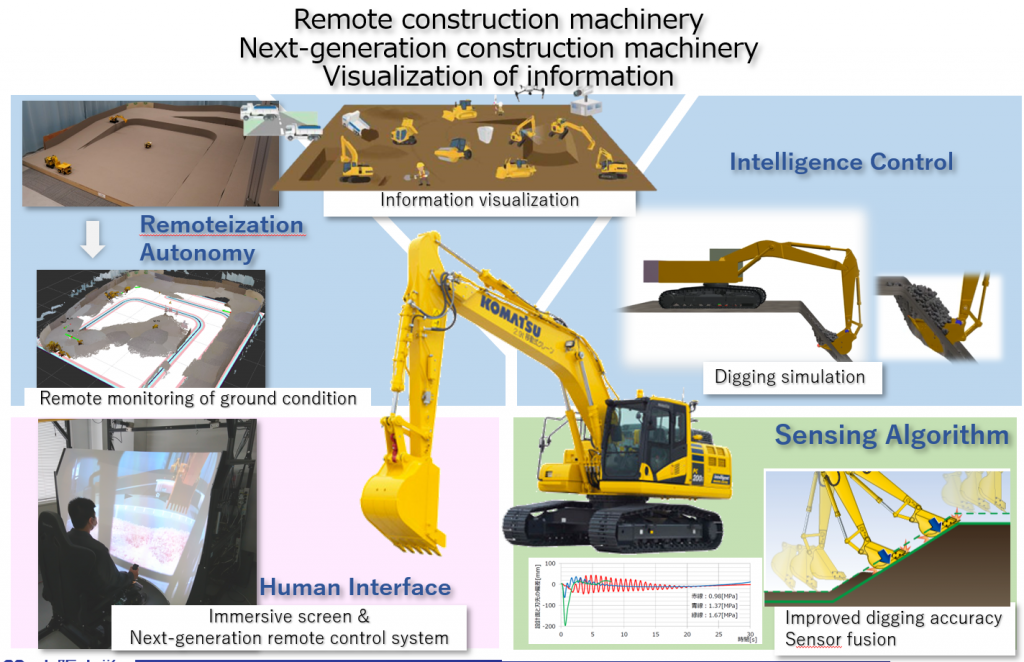
Always DAIKIN between “People” and “Air”
DAIKIN Collaboration Research Institute, which was founded as the former chemical research section of DAIKIN Industries, Ltd. in 2006, was established as a collaborative research project in Osaka University and has obtained many research results until now.
From early 2016, it aims to create fundamental technologies for the innovation of existing products or systems with the collaboration of the air conditioner section and other sections.
In order to continue creating a more comfortable living environment and earth environment, our company DAIKIN Industries now accelerates a challenge to next generation technologies, keeping our eyes wide open into the future from the viewpoint of people living there.
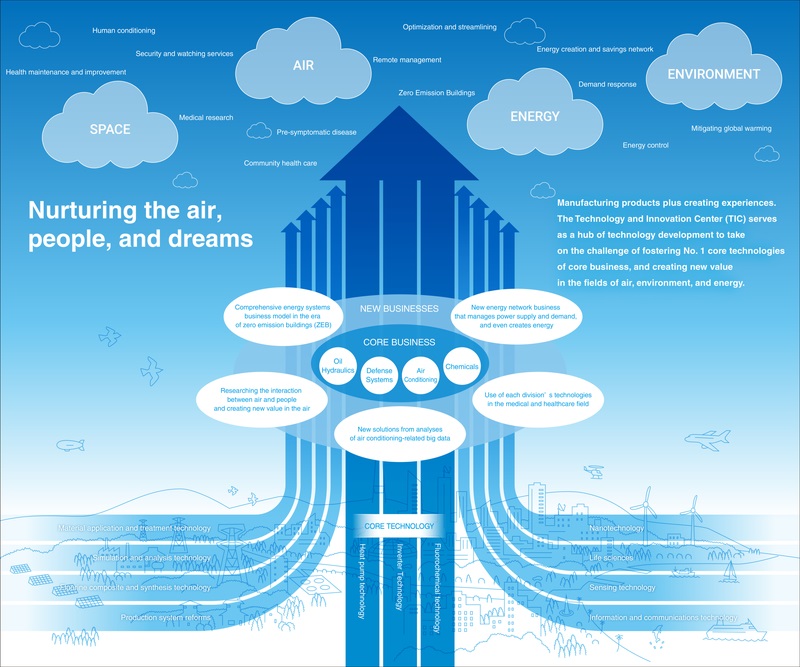
In our research alliance laboratory, fused state-of-the-art of Osaka University technology and accumulated technology of Nippon Shokubai, is working on the creation of new products and technologies that are innovative and competitive.
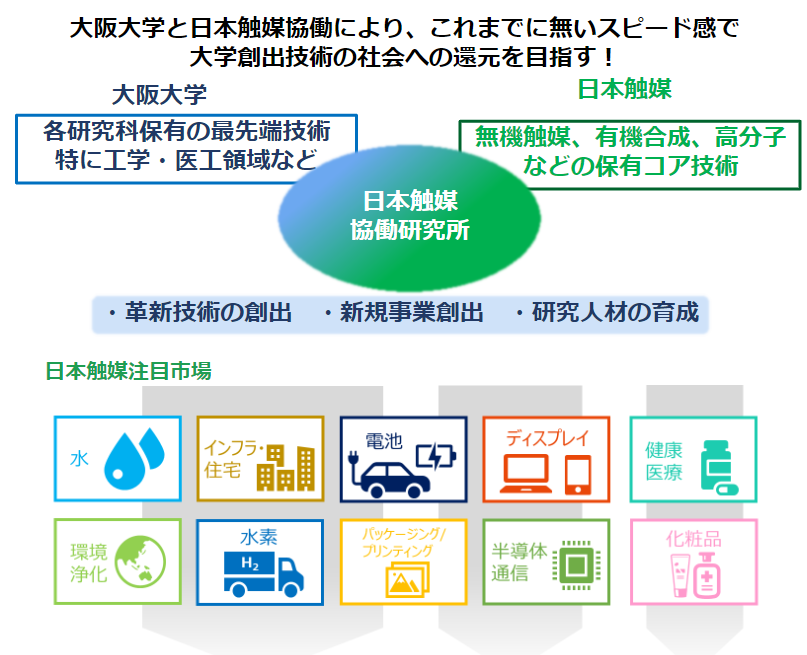
Our mission is to make a contribution to the stability and growth of the society for the next 100 years.
To aim at the transformation to co-creation, Osaka University and NTN are planning and carrying out research with open innovation.
Our institute is based on the “”N-type strategy.””
The strategy is made up a technology push vector and a vision-driven vector.
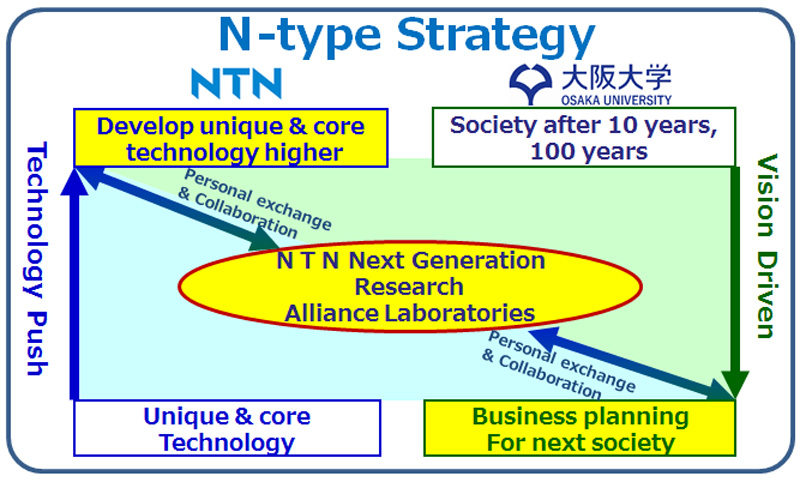
In ULVAC-OSAKA University Joint Research laboratory for Future Technology, we perform the various studies based on the vacuum technology widely from the preservation of pharmaceutical products to film deposition equipments for the flat-panel display, semiconductor devices and LED devices. Through a framework of joint research with Osaka University, we work for the advanced personnel development, as well as the contribution to development of the science in the medical and engineering fields. We hope to establish networks formed by the interchange of mutual researchers.
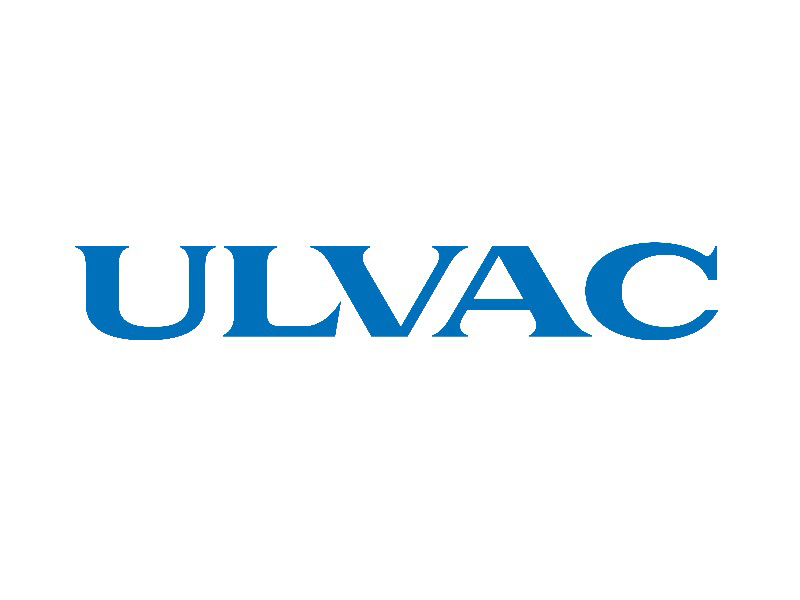
In the evolution of the society and our lifestyles with the progress of science and technology, we will pursue the infinite ability of advanced recyclable steels to guarantee the safety and security in our life, on the representations of lightweight vehicles, high-rise buildings, and energy transportation materials.
We will develop a new multi-physics and multi-scale characterization techniques, resulting in the understanding of a dynamic deformation mechanism in steels, including the time dependent phenomenon. It is a key for us to make a good relationship among several kinds of laboratories in material science divisions.
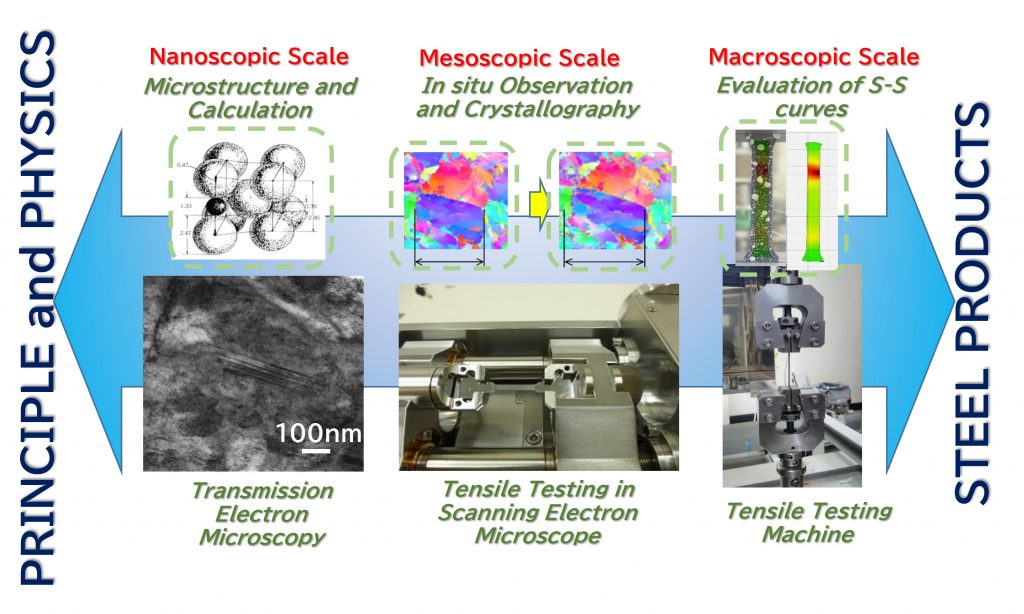
Metabolomics is the study on investigating comprehensively biological phenomena in vivo by analyzing exhauslive various metabolites generated by life activities. It is useful for elucidating complex systems such as disease prediction, drug discovery support, and food improvement based on scientific evidence. Our laboratories are collaborating with various professors at Osaka University, mainly in the field of metabolomics. Furthermore, since fiscal year 2021, Shimadzu has started the REACH Project, in which Shimadzu employees are dispatched as doctoral students, with the aim of further accelerating collaboration and early social implementation of research results.
PERSOL Industrial Human Resources Research Alliance Laboratory
This research alliance laboratory was established in September 2021 to evaluate and develop human resources in biotechnology. Osaka University and Persol Tempstaff Corporation will work together to develop an evaluation method based on a job analysis and career visualization, to contribute to high-level human resources in the field of biotechnology.
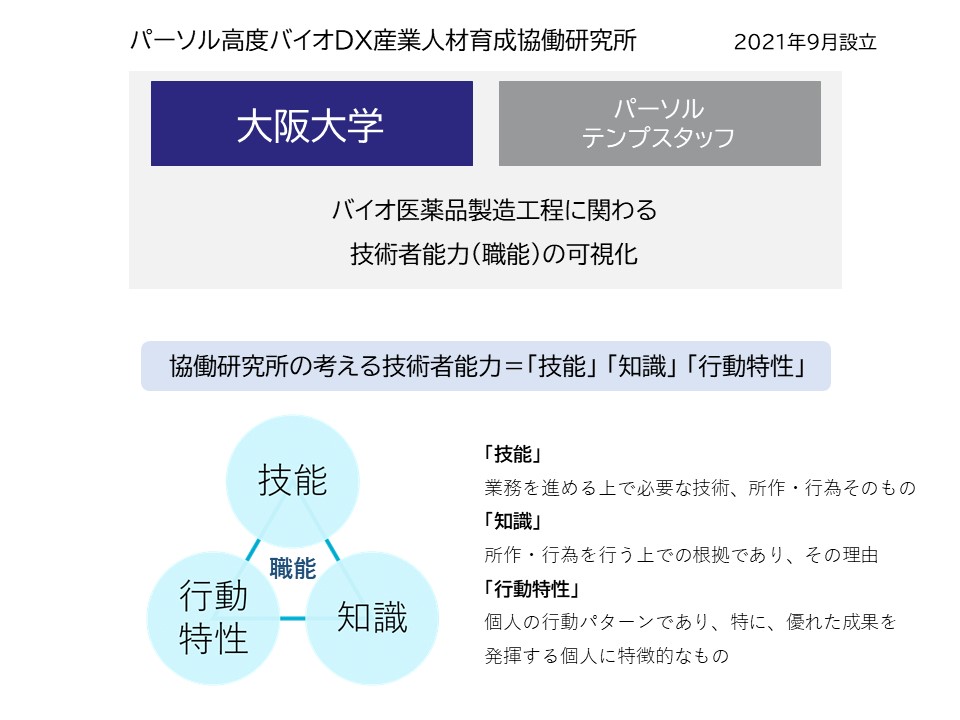
Top